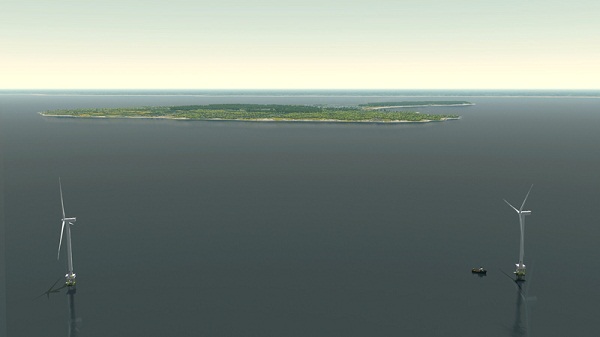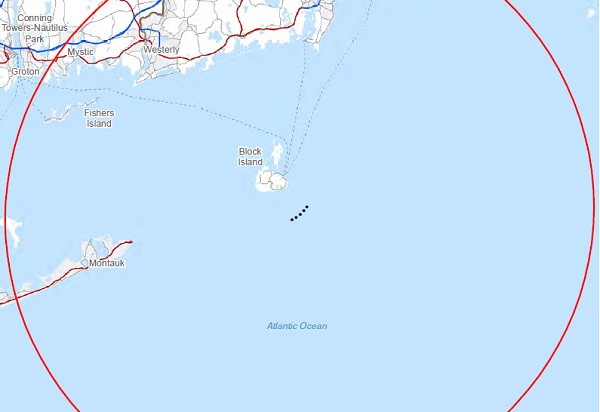While Cape Wind in Massachusetts — still at least two years from beginning ocean construction — can surely claim to be the most famous offshore wind farm project in the United States, Block Island in Rhode Island might before long hold a more meaningful title: the first offshore wind farm in the United States.
Developer Deepwater Wind was sure sounding confident about its 30-megawatt Block Island Wind Farm this week, after submitting the paperwork for final permits with state and federal agencies.

The company said it spent upward of $7 million of private money to study the possible environmental impact of the demonstration project, which would consists of five 6-megawatt turbines spaced about a half-mile apart in a single radial array, three miles south of Block Island in Rhode Island state waters. It’s a small array, but these are big turbines, with the tips of the turbine blades reaching well over 600 feet above the surface of the ocean.
“Based on this intensive, three-year data collection effort, Deepwater Wind believes that there are no environmental impediments to building and operating the wind farm and transmission cable in the designated locations,” the company said in a statement.

Those claims are likely to be tested as Deepwater’s submissions – available here – are poked at by the state and federal agencies, and by the public, in the review process. Deepwater confidently predicted that this stage of the permitting will “be resolved by early 2013.” Work would then start, with the turbines generating power in 2014.
According to regional media reports, the Block Island project does have some opponents on the island; their objections seem to be mostly on the grounds the tall turbines would mar sea views and, in the process, lower property values. But many more residents also seem excited that the wind farm would allow the island to cut back use of diesel generators that are now used to power its grid. There doesn’t appear to be any of the sort of organized opposition that has turned Cape Wind into an 11-year (and counting) saga.
This could be why: Not only are the generators dirty, but the power they produce is expensive; a resident told a Connecticut newspaper that islanders pay a whopping 60 cents per kilowatt/hour on average, several times typical electricity rates. It wouldn’t be difficult for wind power to beat that.
The Block Island turbines are expected to meet about 90 percent of the island’s electricity needs, but that would use up just a small portion of what the array produces; the rest of the power would go to the mainland via a 34.5-kilovolt alternating current bidirectional submarine transmission cable (which could also deliver power to the island when the turbines weren’t generating enough power).
Deepwater has an agreement to sell power from the Block Island array to National Grid.
Deepwater might be a good bet to be built, with its relatively small footprint – but the company has much bigger plans on the drawing bords. Farther out to sea – most turbines would be more than 20 miles from land – it wants to build a 150-200 turbine project with a generating capacity of between 900 and 1,200 MW.